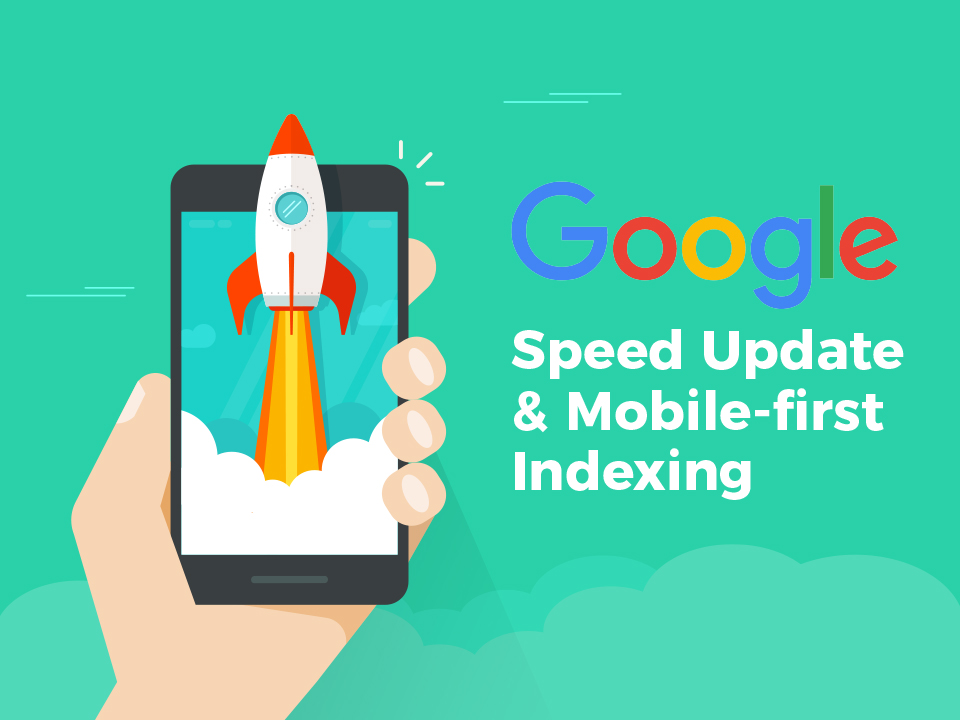
Google’s Latest Move Towards a Faster Mobile-Friendly Web
July 31, 2018
From Josh’s Desk: STAY ON COURSE
March 24, 2020From Josh’s Desk: ACTIVE vs. PASSIVE CUSTOMERS
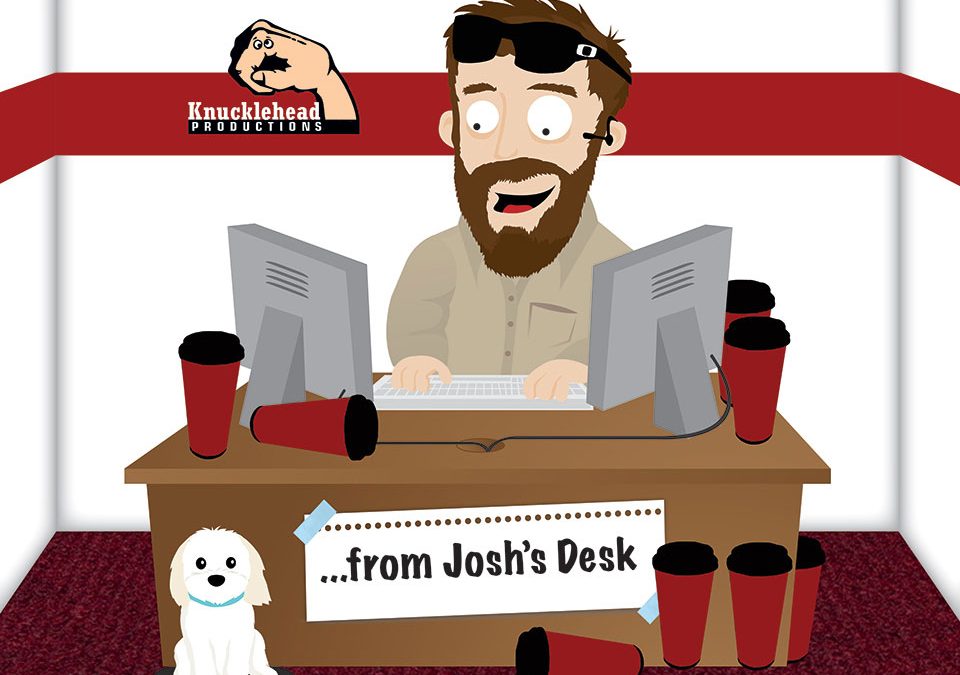
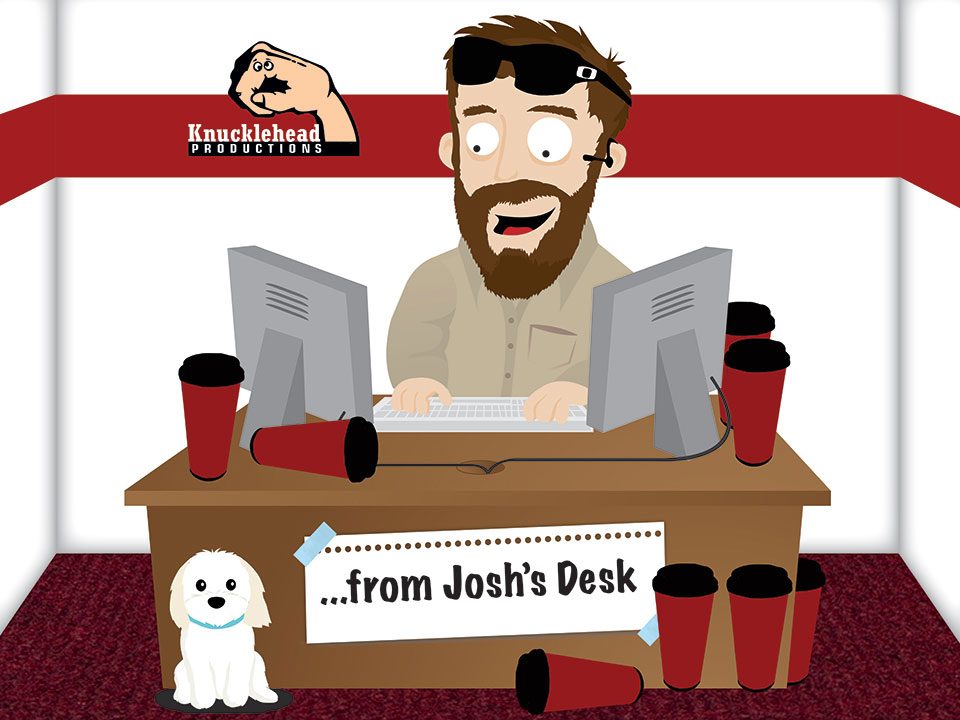
As many of you know I'm a huge fan of the whiteboard. I was illustrating the concept below and thought it might be an interesting read. Enjoy.
I have never heard of anyone breaking out marketing strategies in this manner, but after a decade of creating and fulfilling advertising campaigns, I have come to use the following as a very reliable model in the discussions of attracting potential new customers. As we look towards 2019 and potential growth opportunities, it seems critical to be able to clearly identify the types of potential new customers and the forms of advertising to reach those potential new customers.
What are ACTIVE CUSTOMERS?
These are customers who are ACTIVELY looking for your product or service now or in the near future (within your service area). These customers are actively shopping and comparing quotes and tend to be more educated customers. All things being equal, these customers tend to be a harder sale because of quote comparisons.
What are PASSIVE CUSTOMERS?
These are customers who are NOT ACTIVELY looking for your product or service but are still in need of it now or in the near future (within your service area). Either they are unaware of your product/service, the need has been forgotten, or the purchase has taken a back seat to more pressing concerns. If you can reach these customers, all things being equal, they are an easier sale vs. customers who are actively shopping.
What is ACTIVE ADVERTISING?
These are forms of advertising that are placed directly in front of potential customers. The highest impact of these forms of advertising is on customers who are NOT ACTIVELY looking for your product or service. The advertisements serve to remind customers or make them aware of their current need for the product or service. It must be said, that in addition to reaching PASSIVE CUSTOMERS, these forms of advertising do also reach ACTIVE CUSTOMERS. In many cases, it also reinforces your product or service as one worth exploring as a potential purchase. The customer will either see or hear a piece of advertising for your product or service at the time of YOUR CHOOSING. The following are some examples of ACTIVE ADVERTISING:
Examples:
- Social Media & Display Advertising
- Direct Mail or EDDM (Every-Door Direct Mail)
- TV Commercials & Radio Advertising
- Door Hangers & “Leave Behind” Sales Materials
- Educational or Speaking Opportunities
- Email Campaigns (have become less effective)
What is PASSIVE ADVERTISING?
These are forms of advertising that are available to be found by customers who are ACTIVELY looking for your product or service now. While they are not placed directly in front of potential customers, they are strategically placed in locations to be found by potential customers. The customer must either choose to pick up a piece of sales material or search for your product or service at a time of THEIR CHOOSING. The following are some examples of PASSIVE ADVERTISING:Examples:
- Websites & SEO (Search Engine Optimization)
- PPC (Pay Per Click Advertising) & Retargeting
- Brochures & Rack Card Displays
- Directory Listings & Phone Books
- Traditional & Vehicle Signage (customer still must choose to capture the info)
- Customers Newsletters (more effective for client retention)
Active Advertising = Passive Customers
Passive Advertising = Active Customers
Passive Advertising = Active Customers
Here is a Simple Example: The New Car Buyer
An ACTIVE CUSTOMER is interested in purchasing a new car. This customer is in need because their current vehicle is old and unreliable. They are looking online for year end deals and visiting dealerships. They are weighing the pros and cons of various makes and models. They find your website through either a web ad or search result for auto dealers in their area. They visit your dealership as a result and have a good experience. Your dealership is now in the running for their business.
A PASSIVE CUSTOMER is also in need of a new car because their current vehicle is old and unreliable. They are in the exact same financial position as the ACTIVE CUSTOMER, but are not actively shopping because they don’t know that this year’s “year end” pricing and finance options are very attractive or for some other reason is putting off the purchase. But this potential customer receives a direct mail postcard outlining all of these wonderful savings. Just as the ACTIVE CUSTOMER, they visit your dealership as a result and have a good experience. The likelihood that this customer will purchase is higher because they are not actively shopping your options against the competition’s. To them you are a very convenient discovery at the right time. They were in need, the price and options were right and the experience was good.
When to Advertise?
I always recommend that clients plan out their advertising campaigns in 12 month increments or at a minimum into seasons of the year or the four fiscal quarters, whichever is more appropriate for the business. The best strategy is to design and produce the campaign in the quarter prior to the one in which you want the campaign to run. In fall you plan for winter and in winter you plan for spring and so on. These campaigns should be appropriate to the current need of the customer (in that quarter) and run correspondingly. Below are two very simple examples of businesses and possible ad campaigns.
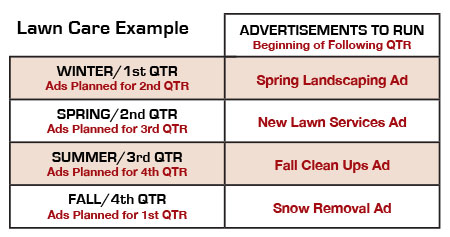
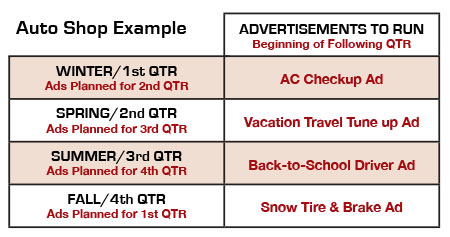
Why to run both concurrent PASSIVE & ACTIVE ADVERTISING campaigns throughout the year:
Below is a graphic to help you visualize four specific items. First is an arbitrary service radius to a specific location. Within this service area are the potential customers you could attract within the coming year. For this example we have used a 10 mile radius from our location. The second is that visually we have broken that radius into four quarters corresponding either to a season or fiscal quarter to represent potential customers during that period of time. The third and fourth items are the representations of both potential ACTIVE and PASSIVE customers within those quarters/seasons.
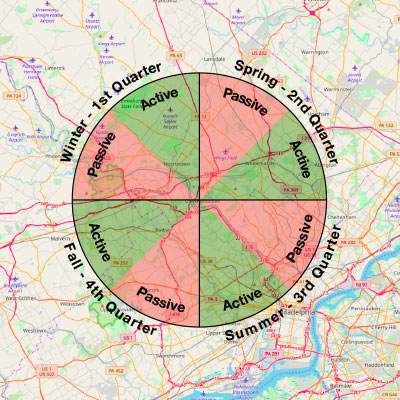
While the actual numbers of potential ACTIVE vs. PASSIVE customers by season are highly unknown and vary by industry, we have made them 50/50 for this example. In any case, those business who choose only PASSIVE forms of advertising may only reach a portion of potential customers (possibly only 50%), whereas those businesses who do both ACTIVE and PASSIVE forms of advertising will reach a much higher number of potential new customers.
The Frequency of Both
There is a term in advertising called frequency. It refers to the amount of impressions a potential customer has to your ad or brand. In the example above there is a synergistic effect for a portion of ACTIVE CUSTOMERS. By them finding your business actively (through Passive Advertising) and them also being a recipient of your ACTIVE ADVERTISING, they have a higher frequency of exposure to your product or service and thus increases the likelihood of them becoming a customer.
My Disclaimer: There are many variables that are attributed to converting potential customers and the above article and examples are outlined in very simple terms to explain a few concepts associated with reaching potential customers and the timing of campaigns. These are my opinions only and always recommend the hiring of marketing professionals. As always, thanks for reading.

